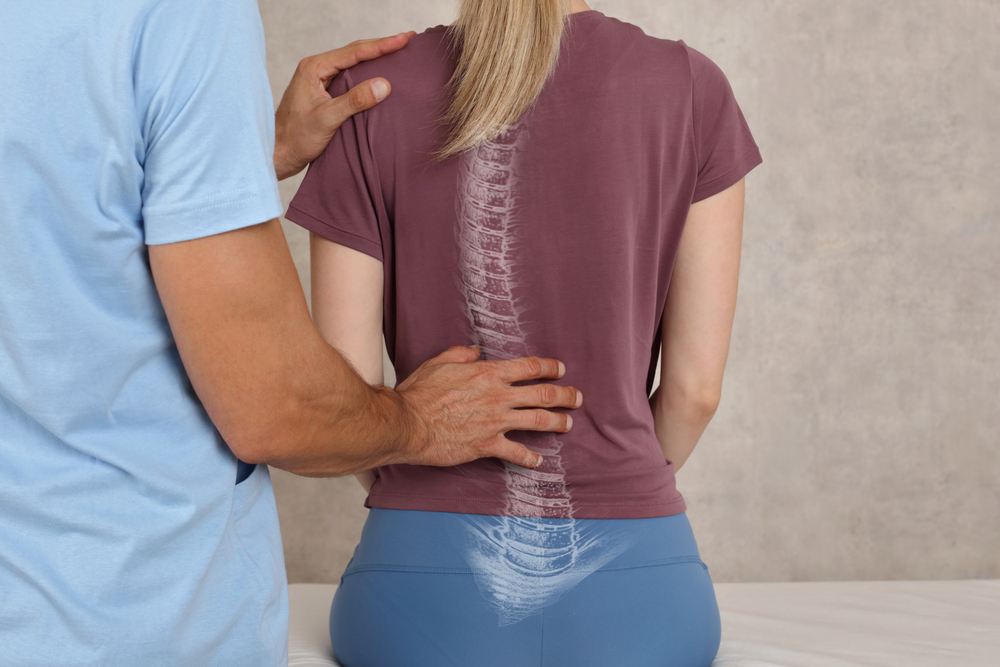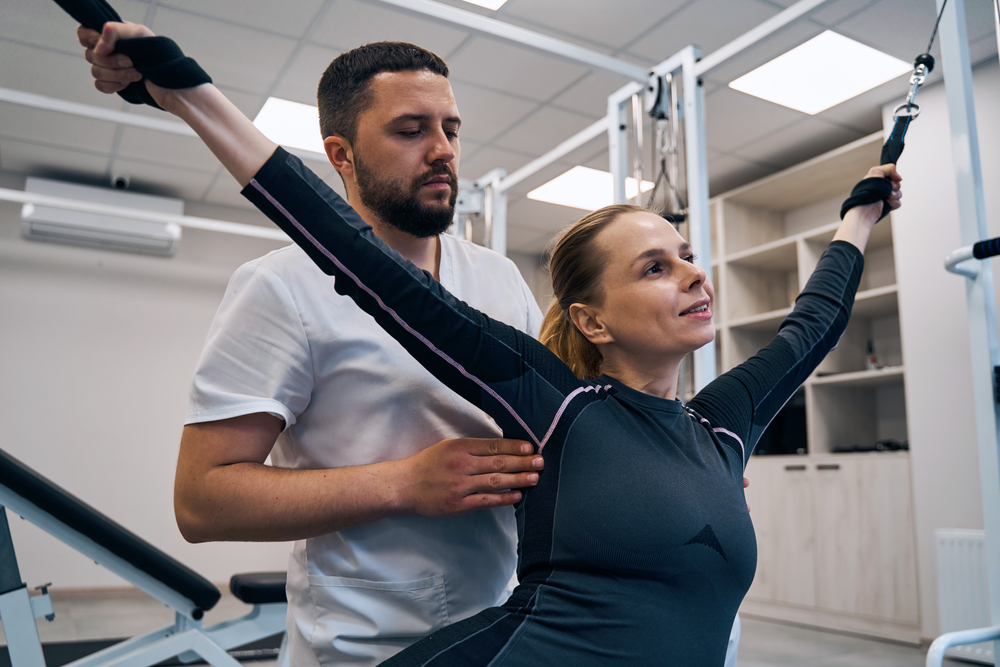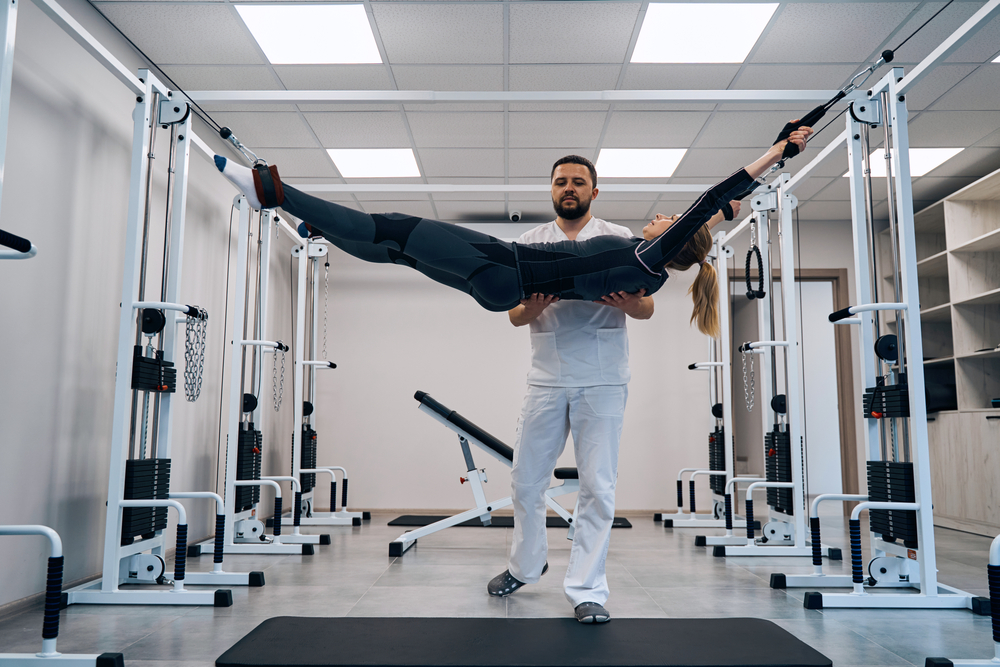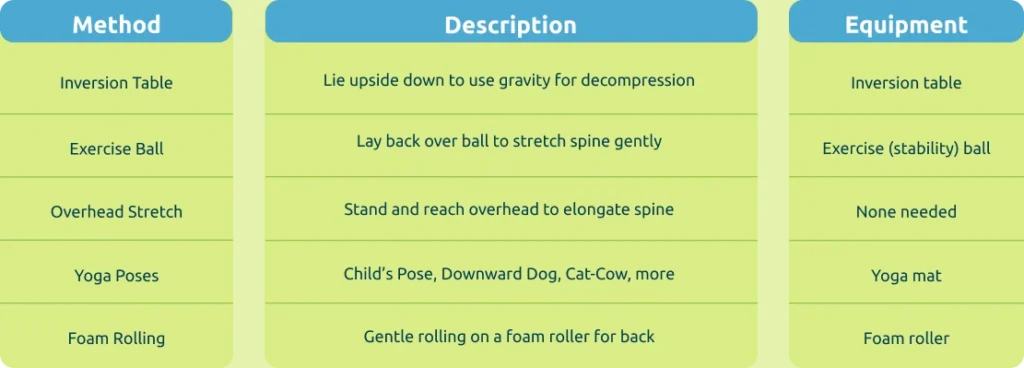What is Spinal Decompression?
Spinal decompression is the process of relieving the pressure that builds up in the vertebrae and discs of your back. Think of your spine like a stack of cushioned blocks: over time, they get pressed together because of gravity, movement, and everyday stress. Spinal decompression gives those cushions (spinal discs) a chance to “breathe,” promotes better alignment, and can reduce pain.

Why is Spine Health Important?
Your spine is literally your backbone, it supports you, protects your nerves, and allows you to move with flexibility. A healthy spine means:
- Less back and neck pain
- Improved posture
- Greater mobility and energy
- Lowered risk of injury
Poor spinal health can lead to chronic pain, limited movement, and even nerve issues. That’s why it’s crucial to give your spine some extra care.
How to Decompress Spine by Hanging
Hanging for spinal decompression uses gravity to gently stretch your back. When you hang by your hands from a sturdy bar, your body weight creates a gentle pull, increasing the space between your vertebrae. This action is simple but effective for easing pressure, especially if you don’t have expensive equipment at home.
This method is all-natural, requires minimal setup, and can be done by most people as long as you follow safety guidelines.

Benefits of Hanging for Spinal Decompression
Decompressing your spine by hanging can provide numerous advantages:
- Eases back and neck pain: Many experience relief from chronic discomfort and tightness.
- Boosts flexibility: Regular hanging helps with overall spinal mobility.
- Strengthens grip and shoulders: An extra fitness bonus!
- Promotes proper posture: Decompressing your spine undoes hunching from sitting.
- Enhances blood flow: Stretching the back allows important nutrients to reach your spinal discs.
- Naturally stretches muscles: Hanging gently releases the lats, shoulders, and torso.
Is Hanging Right for You? Safety Precautions
Before you begin, it’s important to consider your health status. Hanging is generally safe for most healthy adults. However, you should NOT attempt this method or should consult a doctor if you:
- Have severe osteoporosis
- Recently had back or shoulder surgery
- Have herniated discs or spinal injuries
- Suffer from severe shoulder, elbow, or wrist pain
- Are pregnant
- Have heart conditions or uncontrolled high blood pressure
If unsure, always check with a healthcare provider.
Getting Ready: Equipment and Setup
You don’t need fancy gear! Here’s what you need:
1. A Sturdy Bar
- Use a pull-up bar designed for your weight, a monkey bar outdoors, or a secure beam.
- The bar should be high enough so your feet clear the floor when you hang with arms extended.
2. Appropriate Footwear and Clothing
- Wear sneakers or athletic shoes for grip and safety.
- Avoid slippery or bulky clothing.
3. Safe Surroundings
- Ensure the area under the bar is clear.
- Place a mat underneath in case your grip slips.
Step-by-Step: How to Hang to Decompress Your Spine
Ready to try? Here’s a simple sequence:
1. Warm Up
- Do some light movements: walk around, do arm circles, or stretch for a few minutes.
2. Grip the Bar
- Use an overhand grip (palms away) or underhand grip (palms toward you), whichever feels more secure.
- Hands should be shoulder-width apart.
3. Lift Off
- Step up, jump gently, or use a sturdy box to help you reach the bar.
- Allow your feet to leave the ground and hang with your body relaxed.
4. Relax and Breathe
- Keep your arms straight but not rigid.
- Relax your shoulders, letting your body weight gently stretch your spine downward.
- Take slow, deep breaths. Focus on feeling your back lengthen.
5. Hold for 10–30 seconds
- Beginners: Start with 10 seconds.
- Progress as your grip and comfort improve.
6. Gently Lower Yourself
- Put your feet down first, then release the bar slowly.
Repeat for 2–3 sets, resting 30–60 seconds between.

Types of Hanging: Find What Works for You
- Full Dead Hang
- Hang freely without touching the ground.
- Best for those with moderate grip/upper body strength.
- Assisted (Partial) Hang
- Keep your feet lightly on a box or the ground for support.
- Ideal if you’re new or have limited grip strength.
- Active Hang
- Engage your core and keep your body stable, no swinging or arching.
- Good for building strength.
- One-Arm Hang (Advanced)
- Hang with one arm (advanced only).
- Boosts strength but may not be necessary for decompression.
How Long and How Often Should You Hang?
- Start Small: 2–3 sets of 10–20 seconds each, once per day.
- Increase Gradually: As you get stronger, work up to 30–60 seconds and add more sets (up to 5).
- Daily or Every Other Day: Best results come from consistency!
Listen to your body! If you feel pain (not just mild stretching or tired muscles), stop and consult an expert.
Tips for Better Results and Comfort
- Relax your body as much as possible.
- Don’t let your shoulders shrug up near your ears, keep them relaxed.
- Use wrist straps if your grip gives out before your back does.
- Don’t swing or twist while hanging.
- Breathe deeply, exhale slowly to help your body relax.
- Stretch your hands and forearms before and after if grip fatigue is an issue.

Common Mistakes and How to Avoid Them
- Going Too Long, Too Soon: Start with short hangs and build up slowly.
- Arching Lower Back Too Much: Keep core lightly engaged to support your lumbar spine.
- Locked Elbows or Shoulders: Keep arms straight but not tense; stay relaxed.
- Holding Your Breath: Steady, slow breaths are important.
- Ignoring Pain: If the stretch causes sharp pain, stop immediately.
When NOT to Try Hanging for Decompression
Skip this method or talk to your doctor first if you have:
- Recent or severe injuries to back, shoulders, elbows, wrists
- Diagnosed disc issues or pinched nerves
- Weak bones or osteoporosis
- Heart problems or uncontrolled high blood pressure
- Any condition making it hard to hang safely
Other At-Home Methods for Spinal Decompression
If hanging isn’t right for you or you want some variety, try these alternatives:

Conclusion
Learning how to decompress spine by hanging is a simple, effective way to take control of your back health. For most people, all it takes is a secure bar, a few minutes per day, and a willingness to listen to your body.
Remember:
- Start gently and progress slowly
- Focus on safety and good posture
- Mix in other decompression and mobility exercises for best results
Hanging for spinal decompression can offer significant relief, improved posture, and greater mobility for a pain-free life. If you have any doubts, consult with a chiropractor to ensure it’s the right approach for you. Here’s to a stronger, healthier back!
Consult a chiropractor if you have any spinal concerns or before starting new exercises, especially those involving your back. This guide is intended for educational purposes only. Contact APEX Chiropractic & Wellness Center for expert chiropractic treatments in Greenacres, Florida.
FAQs
Is hanging for spinal decompression safe?
It’s safe for most healthy adults, but those with injuries, surgeries, or certain health conditions need medical approval first.
Does hanging help with herniated discs?
Hanging can relieve some pressure, but if you have a disc herniation, consult a doctor before trying this method.
When will I see results?
Some people feel immediate relief; others may notice less pain and more flexibility over a few weeks of practice.
Can I do this at work or in public gyms?
Absolutely! Many gyms have pull-up bars. Just make sure the bar is safe and sturdy.
My grip gives out before my back feels stretched!
That’s common. Wrist straps can help, or start with partial hangs and work on grip strength over time.




